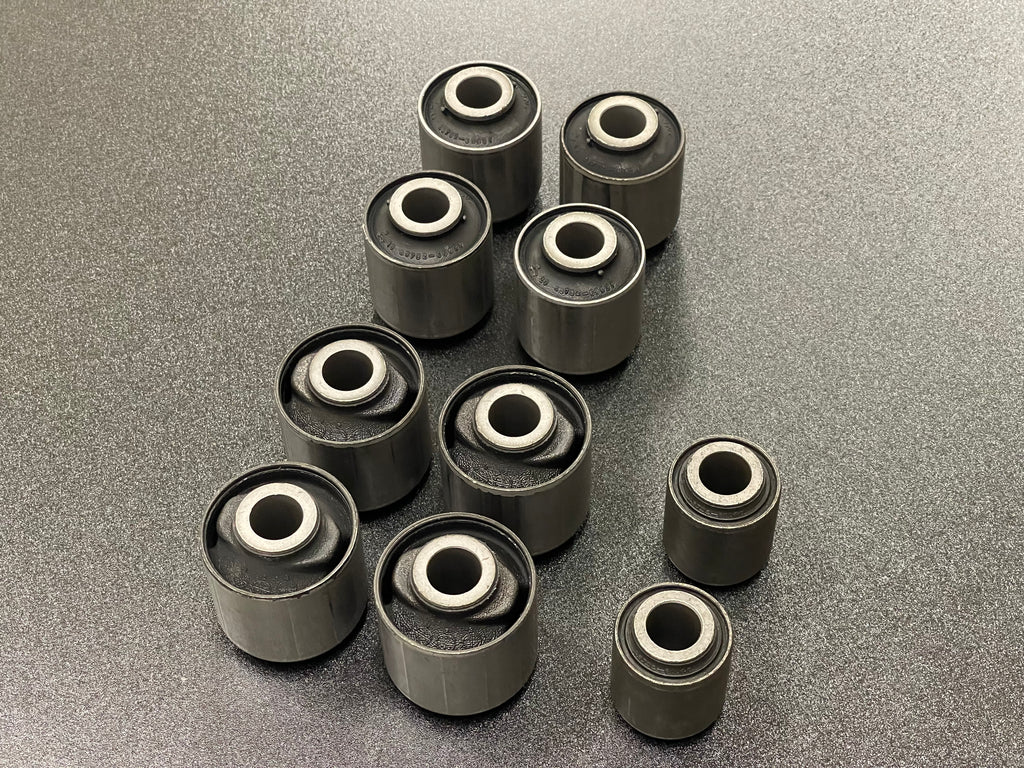Feeling every jolt from the road and hearing more noise than you should? Notice your vehicle responding unpredictably when you steer or brake? The cause could lie in the small rubber bushings within your suspension system.
Though often overlooked, these rubber bushes play an essential role in your vehicle’s stability and safety. They absorb shocks from uneven surfaces, reduce vibrations, and enable precise movement of suspension parts. This helps maintain correct wheel alignment during cornering and braking—directly influencing handling predictability, driving safety, and ride comfort.
Acting as flexible joints in your vehicle’s structure, these compact components deliver performance that’s anything but small. Recognizing their function and benefits makes it clear: high-quality bushings are indispensable for a stable, confident drive.
What are the advantages of rubber bushings?
Want a smoother ride without costly, complex modifications? Tired of constant road noise and vibration? Rubber bushings provide a simple, highly effective solution.
The primary advantages of rubber bushings are superior vibration damping, cost-effectiveness, and zero-maintenance operation. They provide controlled flexibility, isolating noise and harshness while extending the life of surrounding suspension parts without needing lubrication or service.
he value of rubber bushings goes beyond their low initial cost. Their true advantage lies in their material science and design, which we’ve refined over 25 years of manufacturing.
What suspension part improves stability in a car?
Chasing predictable handling and confident control? Wondering which part offers the biggest stability improvement? While many parts contribute, one type is fundamental to them all.

While anti-roll bars and shock absorbers directly manage body roll and bumps, suspension bushings are the foundational parts that improve stability. They provide the precise pivot points that allow all other components to maintain correct suspension geometry under load.
A vehicle’s stability system is an interconnected network. While shocks and struts manage vertical forces, the bushings manage the geometric accuracy of the entire assembly.
How does rubber bush compliance affect vehicle suspension movement?
Does your steering feel vague or disconnected from the road? Does the car wander under braking? The engineered "flex," or compliance, of your bushings is directly responsible.
Rubber bush compliance is its engineered stiffness, which governs suspension movement. The correct compliance allows for necessary motion over bumps while resisting unwanted changes in wheel alignment. This directly impacts handling precision, steering feedback, and overall stability.
Compliance isn’t a single value; it’s a carefully engineered characteristic that balances comfort with control. As manufacturers, we tailor this property for specific vehicle applications.
What are rubber bushings used for on suspensions?
You see the large metal arms and springs of a suspension. But where do the rubber parts fit in? They are used at every single pivot point.
Rubber bushings are used as the flexible connection points throughout a vehicle’s suspension. They join control arms, anti-roll bars, shock absorbers, and subframes to the chassis, allowing for controlled movement while absorbing noise and vibration.
From the main control arms to the smallest stabilizer link, nearly every moving part of the suspension pivots on a bushing. Their quality in each location is vital.
Conclusion
High-quality rubber bushings are not passive components; they are engineered parts foundational to vehicle stability, comfort, and safety. Their performance enables the entire suspension system to function as designed.